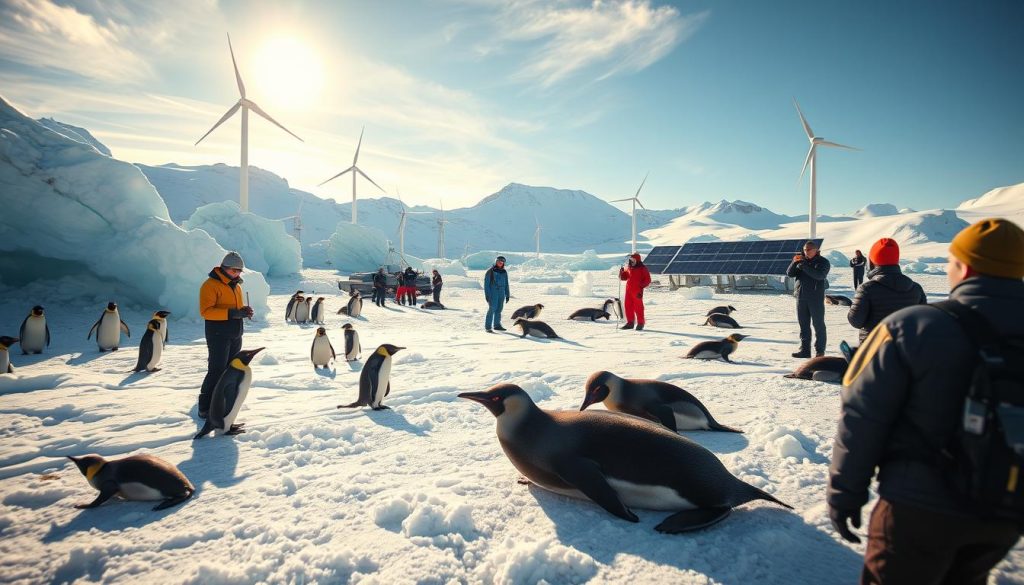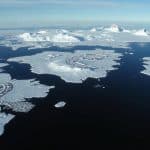As more people understand the importance of saving our planet’s fragile ecosystems, Antarctic conservation becomes key for green businesses. Antarctica is rich in unique wildlife and stunning scenery. It offers business chances that benefit both the environment and business minds. This article will look at sustainable businesses that help protect Antarctica, highlighting smart ways they help the planet and profit makers.
Introduction to Antarctic Conservation

Protecting Antarctica’s unique life is vital. We need to address dangers like climate change, pollution, and high usage. This effort helps us keep not just the amazing animals safe but also the rare biodiversity found there.
Antarctica plays a big role in controlling the global climate. Its ice and glaciers show us how our climate is changing. They affect sea levels all over the planet. Working on Antarctic conservation helps fight global climate change. It also supports practices that keep these ecosystems healthy.
Creating business plans focused on conservation can lead to both environmental and financial benefits. These plans include eco-friendly tourism, research, and new technologies. They are made to lessen the negative effects on Antarctica. The future of protecting Antarctica depends on joint efforts. We must find a balance between human activities and protecting nature.
The Importance of Environmental Conservation in Antarctica

Antarctica is not just about its stunning beauty and remoteness. It is home to unique wildlife like penguins, seals, and seabirds. Each species is critical for the health of the Antarctic ecosystem. The area faces big challenges from climate change, which threatens these remarkable creatures and their homes.
Changes in the climate are causing the ice to melt and temperatures to rise. This affects how animals feed and where they can live and breed. We need to act and use sustainable methods to prevent more harm. Protecting the diverse life in Antarctica helps with worldwide conservation efforts.
Keeping Antarctica’s wilderness untouched has many advantages. Keeping species safe helps regulate the climate too. As the most untouched place on earth, it shows how we can protect our planet. Antarctica teaches us about fighting climate change and caring for our environment.
Overview of Current Environmental Challenges in Antarctica

Antarctica is facing many urgent environmental issues. Climate change leads to faster glacier melting and rising sea levels. This threatens sea life and increases flood risks internationally.
Pollution is also harming this untouched area. Waste from research bases and ships worsens the Antarctic environment. Things like plastic and chemicals hurt wildlife and the ecosystem’s balance.
Resource extraction poses additional problems. The idea of using Antarctica’s natural resources brings up questions about protecting the environment. Illegal fishing endangers sea creatures even more, showing we need better rules and action.
These challenges show we must act sustainably and find new solutions. Supporting research and green businesses can help tackle Antarctica’s environmental threats. Working with local leaders and groups is key to saving this vital area for the future.
Business Opportunities in Antarctica for Environmental Conservation
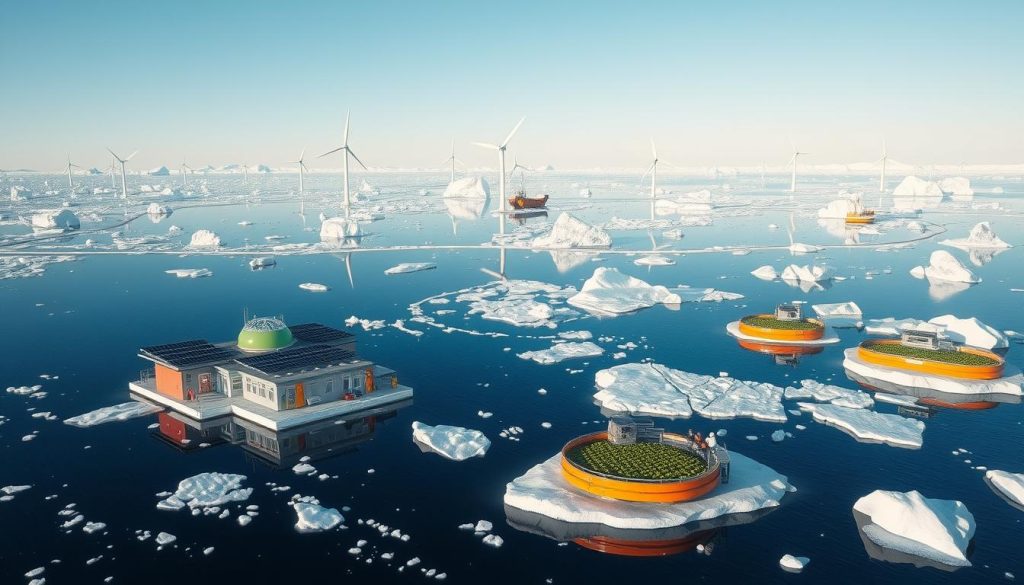
Antarctica offers great chances for eco-friendly businesses. This icy land values sustainability and protecting nature. Businesses can do well here by being innovative and focusing on saving the environment.
Types of Sustainable Business Models
Many business models work well in Antarctica. They all focus on being gentle to the planet. For example:
- Eco-tourism: These companies take tourists on adventures that don’t harm the environment.
- Green technology: Innovative firms creating renewable energy suitable for cold, Antarctic conditions.
- Conservation-focused research initiatives: Groups that study the environment. Their work helps us all understand how to protect it.
Examples of Successful Initiatives
There are many success stories in Antarctica. These projects show how sustainable practices can work well. For instance:
- Eco-tourism groups have received praise for their light impact on nature.
- Renewable energy start-ups have got funding to set up solar projects. These move us away from oil and gas.
- Research teams bring scientists and locals together. This improves conservation efforts and brings in money.
Tourism and Eco-Tourism Ventures
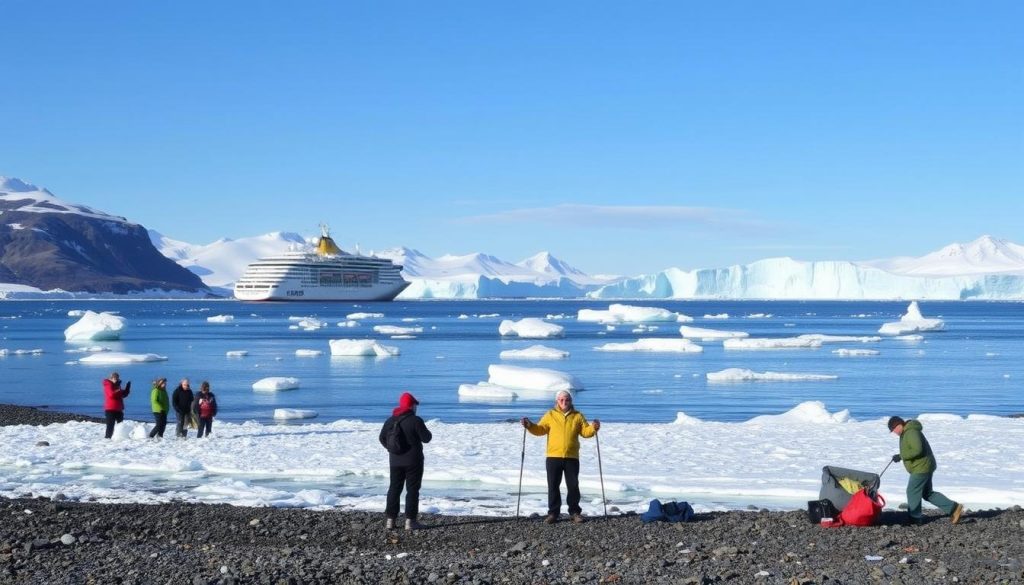
Tourism in Antarctica offers both unique chances and hurdles. It’s crucial to travel responsibly to protect its delicate ecosystems. By doing so, tourists learn about preserving the environment. Companies built on these ideals enrich conservation and can profit greatly.
Insights into Responsible Tourism
Responsible tourism aims to reduce visitors’ effects on the environment. It stresses teaching tourists about local ecology. This understanding encourages greener travel. Companies using these methods lessen their environmental impact. They also appeal to those seeking eco-conscious journeys. These businesses gain trust by following strict environmental guidelines.
Potential Partnerships with Local Authorities
Working with local officials is key for eco-tourism’s success. This cooperation improves adherence to laws and aligns with conservation aims. These partnerships build community support. They also create a space for shared sustainable tourism goals. By connecting with local authorities, companies learn from best practices in this fragile area.
Scientific Research and Innovation
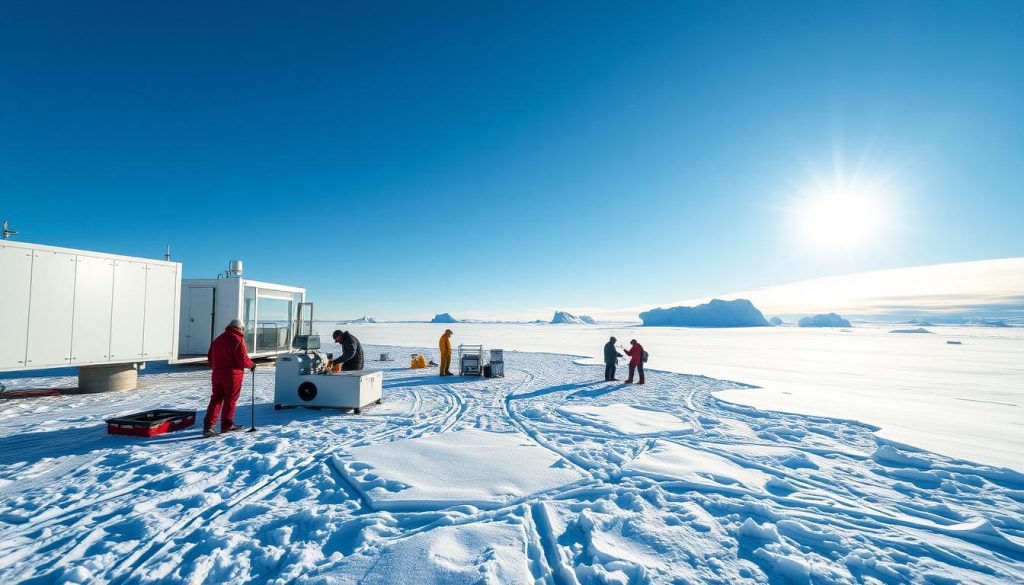
Antarctica is key to scientific research on important issues like climate change and biodiversity loss. Its unique conditions offer great chances for ground-breaking studies. These are vital to grasp the worldwide ecological system. Working together, businesses and academic institutions can create projects that push forward science and help conservation.
- Collaborative projects with universities and research organisations.
- Funding for innovative technology in data collection and analysis.
- Creating sustainable research practices.
Such efforts do more than just improve our knowledge of environmental issues. They also lead to major innovations. Working with government bodies and following international rules makes research stronger and more effective.
Green Technology Solutions
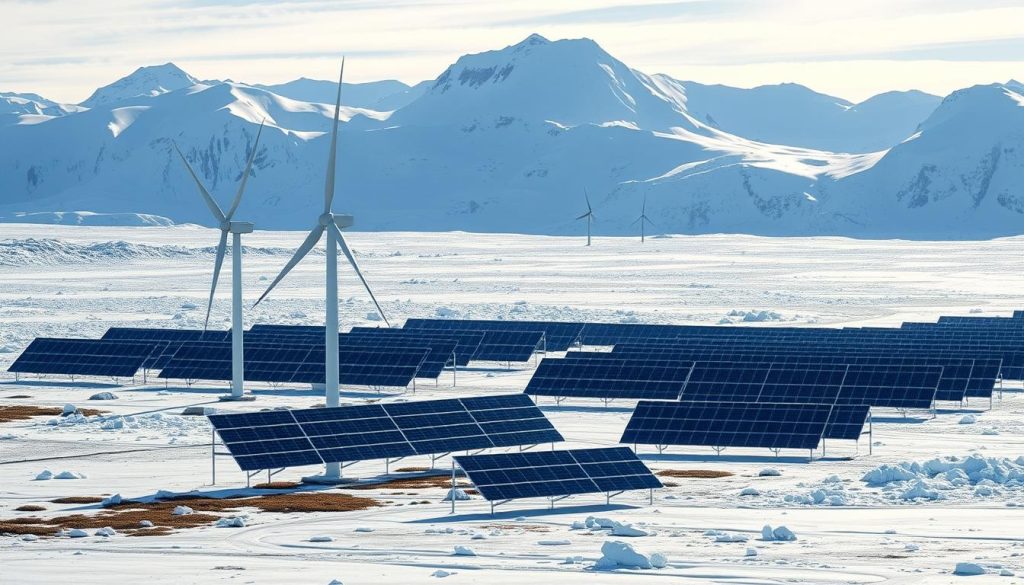
Innovation is key in tackling Antarctic challenges. Green tech offers paths for sustainable practices that help both the earth and businesses. By focusing on renewable energy, like solar and wind power, we make operations eco-friendly in extreme Antarctic conditions.
Renewable Energy Projects
Renewable energy in Antarctica brings many benefits. Solar power works well in varied light, being highly useful in summer. Wind energy, boosted by the region’s strong winds, offers another clean energy source. These options help cut down the carbon emissions from traditional energy methods. Investing in these renewable systems promotes eco-friendly business in the Antarctic.
Waste Management Innovations
Sustainable waste management is crucial in Antarctica. Innovative waste reduction and recycling greatly lower environmental harm. By pushing recycling, we reuse materials instead of just throwing them away. Efforts to lessen waste create a culture of sustainability. This matches business aims with protecting Antarctica’s delicate nature, leading to a greener future.
Collaboration with Environmental NGOs
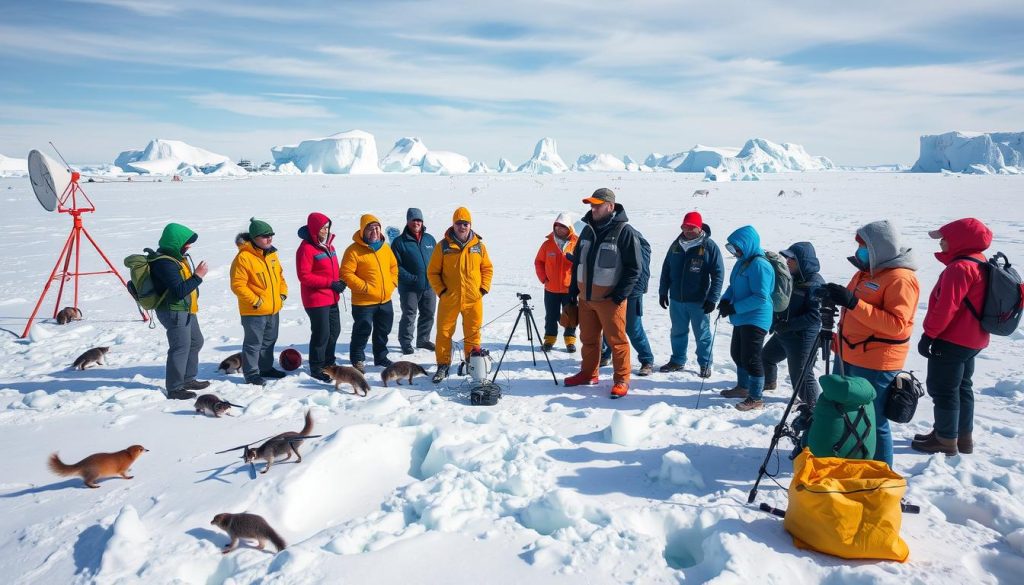
Working closely with environmental NGOs is key for successful conservation in Antarctica. These groups offer expertise, money-making chances, and trust. This helps companies follow sustainable practices well. By partnering, businesses can match their goals with those of NGOs. This makes sure their efforts meet global conservation standards.
The main gains of working with environmental NGOs are:
- Access to Expertise: NGOs have a lot of knowledge in conservation that can help businesses.
- Funding Opportunities: Many NGOs provide grants or help find funding, giving projects the money they need.
- Improved Credibility: Teaming up with esteemed NGOs makes a business more reputable, winning public support.
- Shared Resources: Working together can mean sharing tech, research, and more, making conservation work better.
In the Antarctic, these partnerships push conservation forward and help preserve this special place. Teaming up with environmental NGOs is a smart choice for the planet and businesses.
Legal Framework for Business Operations

Knowing the legal rules is key for any business planning to work in Antarctica. The Antarctic Treaty System is the main set of rules for this area. It helps countries work together to protect the environment and support science, making sure actions match global rules.
Understanding the Antarctic Treaty System
The Antarctic Treaty was set up in 1961, creating rules for all activities there. It pushes for scientific growth and protecting nature, underlining the need for countries to work together. Businesses in Antarctica must follow the treaty to ensure they operate rightly, aiming for peaceful, cooperative management and looking after the land.
Permitting and Compliance Requirements
For lawful business, understanding how to get permits and meet rules is crucial. Companies aiming for Antarctic projects face a detailed permit process. They must show they follow environmental guidelines and plan to act sustainably. Applicants need to provide lots of documents and explain how they will lessen their impact, proving their dedication to keeping this unique environment safe.
Financial Considerations and Funding Opportunities
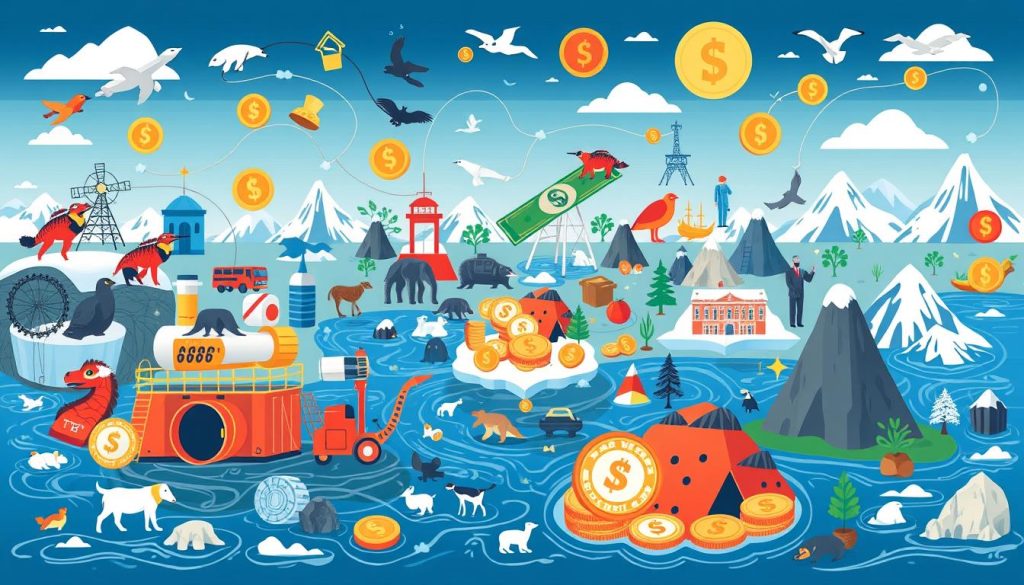
Finding money is key for businesses working in Antarctica. They have to look at different ways to get funds to help save the environment. It’s vital to pick the right options to fund projects that last.
Grants for saving the environment are a big help. They come from governments, global groups, or charities that want to protect Antarctica. Working with these groups brings in money needed for important projects.
Also, venture capital is becoming important for eco-friendly businesses. Investors like supporting companies that care about the planet. Companies need to show how they can make money and help the environment at the same time.
Working with government schemes can also boost a business’s money. There are many local and global plans that support eco-projects in Antarctica. Teaming up with these schemes brings more funds and shows a business is serious about saving the planet.
In the end, using a mix of grants, venture capital, and government help can really increase funding. Choosing the right sources of money is key to the success of eco-friendly projects in Antarctica.
Case Studies of Successful Antarctic Ventures
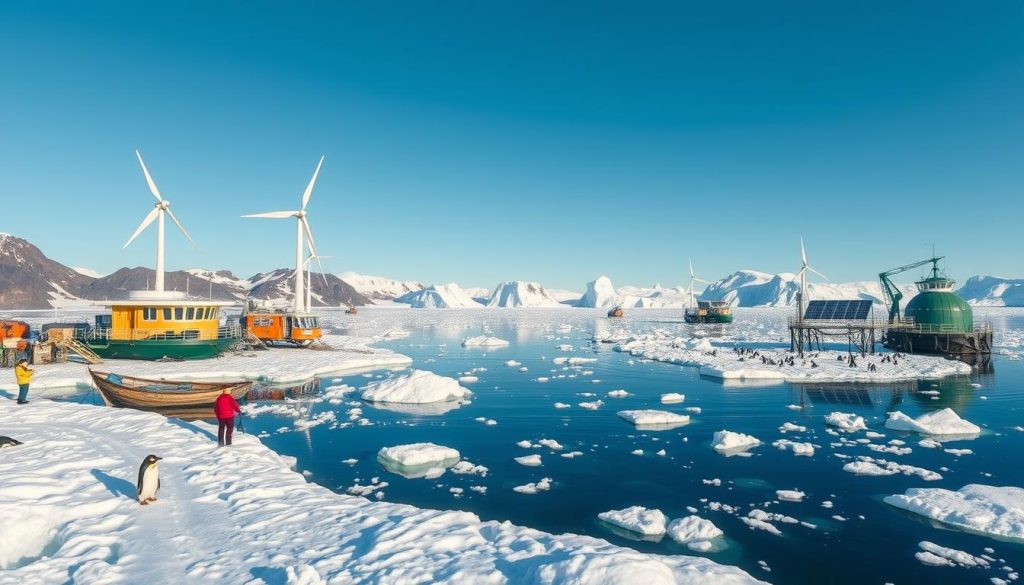
The Antarctic region offers unique challenges and opportunities for businesses. Those committed to environmental stewardship can find success here. Companies like Adventure Network International show that responsible tourism is profitable. It also makes people value the untouched beauty of Antarctica more.
Scientific research in the Antarctic provides another excellent example. The British Antarctic Survey works with businesses to help climate research. This shows how ventures can help understand and save the ecosystem by working together.
- Engagement in eco-tourism initiatives has resulted in increased awareness about conservation efforts.
- Innovative waste management solutions from several ventures have significantly reduced the ecological footprint.
- Joint ventures focused on renewable energy have demonstrated that sustainability and profitability can coexist.
The success stories from Antarctica teach us valuable lessons. They show the importance of making business goals match conservation principles. By doing so, Antarctic enterprises can protect this crucial area. All while meeting their business targets.
Future Trends in Antarctic Business Sustainability
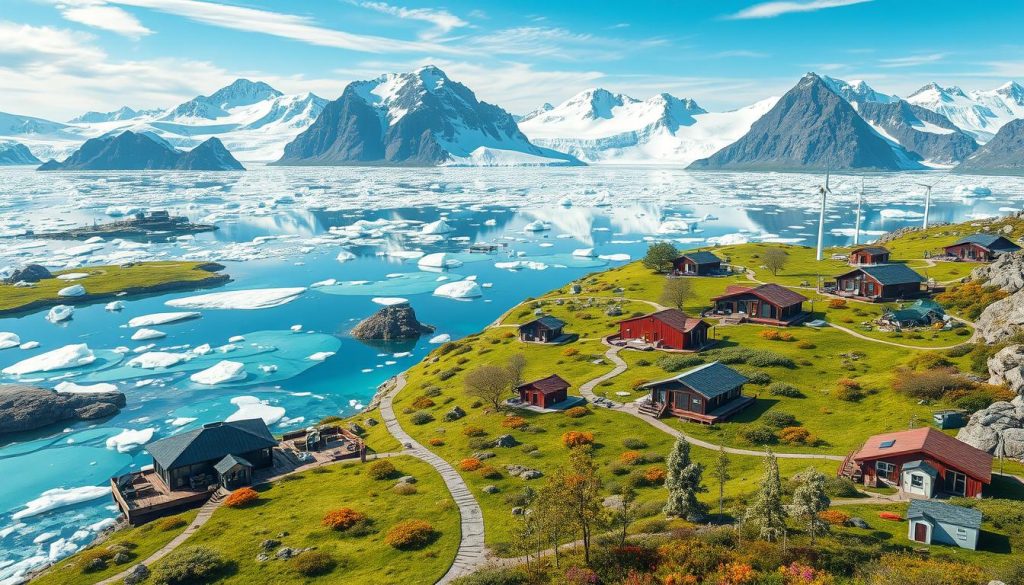
The business sustainability scene in Antarctica is changing fast. This is due to a rising understanding of the need for sustainability. We are now seeing more ethical shopping habits and green innovations that focus on our planet’s future health. Companies in Antarctica are now taking steps to make sure their work helps the environment.
Here are some important trends changing sustainable business actions in this special place:
- The development of green technology that aims at renewable energy and looks after our resources wisely.
- Businesses are working together with groups that protect the environment to create plans that reduce harm to nature.
- A bigger call for businesses to be open and responsible about what they do, coming from customers who care about the Earth.
- New and creative ways to cut down waste, using materials and recycling processes that are friendly to the environment.
This shift shows a big change in how business is done in Antarctica. Focusing on a sustainable future is key to keeping Antarctica beautiful. It also attracts customers who want to support businesses that care about doing the right thing.
Community Engagement and Local Involvement
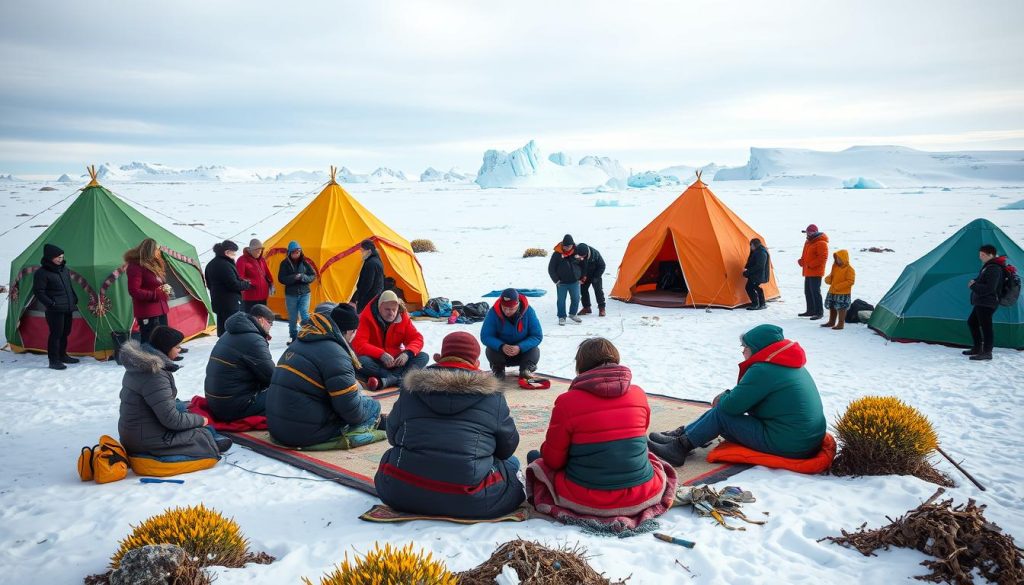
Engaging with local communities is key for successful conservation around Antarctica. Working closely with indigenous groups makes these efforts more effective. It encourages sustainable practices. Community engagement gives locals a sense of ownership. This empowers them to protect their environment.
Building Trust with Indigenous Groups
Building trust with indigenous groups is crucial for conservation partnerships. It means understanding their culture and adding their wisdom to our efforts. Good practices for involving locals include:
- Respecting indigenous rights and sovereignty.
- Getting communities involved in making decisions.
- Offering training and resources for sustainability.
- Promoting projects that combine traditional and scientific knowledge.
This inclusive approach meets community needs and boosts local involvement. When trust is built, protecting the environment together becomes more likely.
Marketing Strategies for Antarctic Conservation Businesses

Marketing well is key for Antarctic conservation businesses to draw in customers. They should use messages that care for the environment. This helps them stand out in a crowded market.
Showcasing what makes your products or services special is a smart move. This might be their green sourcing, commitment to the environment, or creative conservational efforts. These features make a brand more appealing to those interested.
It’s also important to let people know about your green efforts. Businesses could use social media to spread the word about their conservation work. Strong stories and powerful images can share the importance of protecting Antarctica very well.
- Develop clear brand messaging that aligns with conservation goals.
- Leverage partnerships with environmental organisations to enhance credibility.
- Incorporate educational content about the challenges facing Antarctica.
- Engage local communities in marketing efforts to build trust.
By using these strategies, businesses focused on Antarctic conservation can grow a dedicated customer group. This helps both their business and the environment.
The Role of Education and Awareness
Education is key to boosting conservation in Antarctica. It builds a deep awareness of its crucial ecosystems. Awareness efforts are vital to urge support for eco-friendly habits.
Learning about Antarctica’s climate challenges encourages people to support its protection. They become keen on sustainable care for the region.
Environmental education is vital for engaging all sorts of people. Schools and colleges can offer programs on Antarctic ecology. This teaches students about preserving the environment against harm.
Using what they learn, students can turn into strong protectors of Antarctica. They will lead the way in saving this precious place.
Awareness campaigns make good use of social media and events too. This approach gets the conservation message out further, building a united effort in defending Antarctica. An educated public is crucial in tackling environmental dangers and ensuring healthy ecosystems stand strong.

